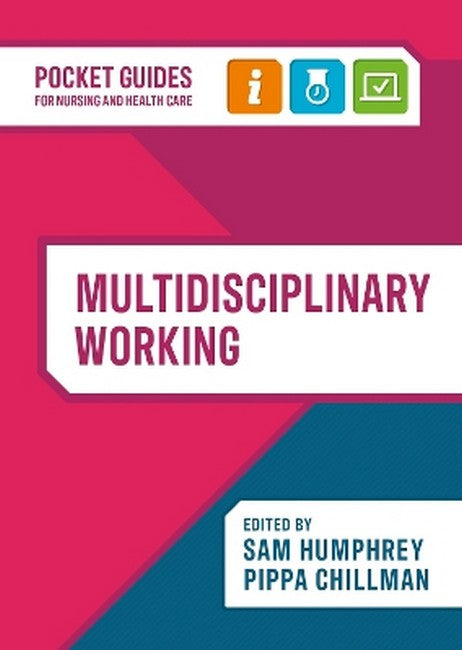Sam Humphrey is a Lecturer in Learning Disability Nursing at De Montfort University. His initial background upon qualifying as a learning disability nurse was working in residential nursing services for adults with profound and multiple physical and learning disabilities. Sam then moved into a primary care liaison nursing role supporting general practice and primary care colleagues in their work with people with learning disabilities and became a trained reviewer as part of the national Learning Disabilities Mortality Review (LeDeR) programme.
Request Academic Copy
Please copy the ISBN for submitting review copy form
Description
Preface; List of contributors; Acknowledgements; Abbreviations Preparing for multidisciplinary team (MDT) working 1. Introducing multidisciplinary working 2. The MDT and professions 'grab-sheet' 3. Nursing fields and common nursing roles 3.1 Adult nursing 3.2 Children's nursing 3.3 Mental Health nursing 3.4 Learning Disability nursing 4. Allied Health Professionals 4.1 How AHPs contribute to the MDT 4.2 Learning more about AHPs 5. Social care professions 5.1 The role of social care and its links with other professions 5.2 The biopsychosocial model in social care 6. Common situations requiring MDT input 6.1 Example A: Emergency and trauma 6.2 Example B: Mental health 6.3 Example C: Obstetric emergency 6.4 Example D: Disability and rehabilitation 7. Student roles within the MDT 7.1 Getting involved 7.2 Expectations for students in the MDT 7.3 Benefits of involvement 7.4 Involvement challenges (and solutions) 7.5 Practical tips 8. Building confidence 8.1 Speaking up 8.2 Reflecting on mistakes 8.3 Supporting patients to be confident 8.4 Ways to build confidence Collaborative working within the MDT 9. Integrating into teams 9.1 What are the benefits to staff and patient care? 9.2 Potential difficulties of integrating when you are 'the student' 10. Communication strategies to support integration 10.1 SBAR 10.2 Demonstrating active listening and assertiveness 10.3 Understanding hierarchies and overcoming communication barriers to build relationships 11. Civility 11.1 The Civility Saves Lives campaign 11.2 Acting on civility 12. Inclusivity and teamwork within care 12.1 Key principles of inclusivity and teamwork 12.2 Benefits of inclusivity and teamwork 12.3 Challenges facing inclusivity and teamwork 12.4 Building an inclusive team environment 13. Managing differing priorities and potential conflict 13.1 Balancing urgent and non-urgent needs 13.2 Managing differing priorities in an MDT 13.3 Potential conflict in MDTs 14. Use of language 14.1 Common language barriers in MDTs 14.2 Strategies for clear communication and language 15. MDT working: good practice advice Enhancing the MDT experience 16. Professional identity 16.1 The role of professional identity in MDT working 16.2 Strengthening professional identity in MDTs 17. Collaboration with stakeholders 17.1 Key principles of collaboration with stakeholders 18. Co-production with patients/service users 18.1 Core principles of co-production 19. Patient safety 19.1 The role of the MDT in patient safety 19.2 Strategies for enhancing patient safety 20. Professional development opportunities 20.1 Types of professional development opportunities for MDT members 20.2 How to get started with professional development in an MDT 21. Scenarios for guided reflection and action planning 21.1 Common scenarios 22. Further understanding: ethics and integrity in MDT working 23. The importance of self-care for health and social care professionals working within the MDT

